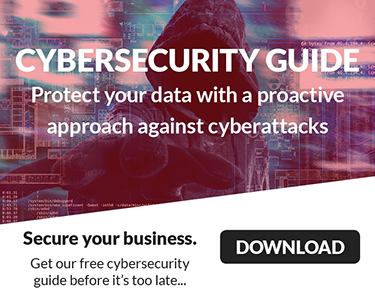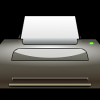 June is National Internet Safety Month, so that got us to thinking. One of our core values at WCI Technology Solutions is protecting you, our clients, and what you value most. Normally we only get to talk to you about your business and work but taking a closer look at Internet Safety allows us the opportunity to discuss the personal impact of the Dark Web, Cyberbullying and Children’s Internet Safety. The Dark web poses a threat to your personal and financial security, while the internet, in general, can be a dangerous place for young children if we fail to provide them with the tools and resources they need to navigate through (should the need arise), and of course avoid altogether, potentially dangerous interactions.
June is National Internet Safety Month, so that got us to thinking. One of our core values at WCI Technology Solutions is protecting you, our clients, and what you value most. Normally we only get to talk to you about your business and work but taking a closer look at Internet Safety allows us the opportunity to discuss the personal impact of the Dark Web, Cyberbullying and Children’s Internet Safety. The Dark web poses a threat to your personal and financial security, while the internet, in general, can be a dangerous place for young children if we fail to provide them with the tools and resources they need to navigate through (should the need arise), and of course avoid altogether, potentially dangerous interactions.
I thought maybe the best place to begin was just to quickly review what the Dark Web and Cyberbullying are. “Cyberbullying, also known as electronic bullying or online social cruelty, is the use of information or electronic communication technologies to bully others.” Methods may include email, instant messaging, chat rooms, texting and social media and can include messages and images. There are many similarities to bullying, but in cyberbullying, the aggressor often hides their identity and have unlimited access to their target 24/7/365. Another difference in the two types of bullying is that while boys and girls do participate in and are victims of both kinds of bullying, unlike bullying, girls are often more common to be both the aggressor and the target in cyberbullying.
“The Dark Web is a part of the internet that is not indexed by search engines.” Not being indexed by search engines means, we cannot get to this material through normal search engines like Google. Information we find through the normal search engines most of us use lies on what is called the “clear web”. There is also a “Deep Web” which you may have heard of, and this refers to the information that is available through what we would refer to as member sites, such as medical records, confidential business / client files, membership websites, or fee-based content. The “deep web” is where maybe as much as 96% or more of the data is held on the web. The information on the Deep web is also not indexed, but in this case, it is done so that it can be protected, whereas the non-indexed data on the dark web is hidden for illicit purpose.
The data on the Dark Web is intentionally hidden, requiring specific browsers and encryption to ensure totally anonymous access. While activity on the “dark web” is not 100% illegal, the intentional anonymity associated with its use provides a secure, anonymous place for criminals to sell your SSN, Credit Card numbers, bank account, passwords and more. Because it is not indexed no one really knows how big the ‘dark web” is and the information is accessed through a complicated, chaotic, and confusing network of servers designed to hide the identity of the user. These servers are manned by volunteers throughout the world.
Not everything on the dark web is “illegal”, but one research study conducted in England in 2015 showed that 57% of the live sites found on the dark web hosted illicit material. The illicit or illegal activity on the dark web is aimed at both the consumer and businesses, but generally speaking the goal is the same to gain access to personal, private or confidential information with the intent to use it to gain access to assets in one way or another. While this is criminal activity in the United States, this is not criminal activity everywhere, and large operations work much like large legitimate corporations – complete with Human Resource Departments and employee benefits. Their only product or service that they offer to their clients is your data, which they stole often because the consumer just does not want to be bothered by difficult passwords.
Since 2015, the dark web’s reputation as a hotbed for illegal activity has grown, and it’s likely that the percentage of illicit sites there have as well. Some of the tools that the Dark Web uses to access our information are: malware and botnets and other virus based attacks on technology systems, and Trojans (RATs) and keyloggers (keyboard logging) which grant remote access to your systems, and phishing attempts, which disguise email as weapons. There are other methods and there are always new emerging threats.
Two widely held misconceptions are:
- The cyber criminals are more interested in larger businesses than they are small businesses or individual users because larger corporations have bigger payoffs and deeper pockets.
- There is nothing we can do about these attacks.
Both are WRONG!
Cyber Criminals will go after the easiest target first. Smaller businesses and individuals are often easier to get to fall into their schemes than larger corporations. Sure, they are going to try the larger one, but pay offs are more likely at the easier targets. Two or Three small fish that were easy to catch are easily as valuable as one large.
And, there is something you can do. In fact, there are things you can do about both Cyberbullying and protecting your information from getting on the dark web. All during the month of June we will be featuring how to go about protecting yourself and your family from cyberbullies and cybercriminals. Be sure to watch for our social media posts on Facebook, Instagram and LinkedIn, and follow our blog.
In the meantime, check out our offer below on how to see if your info is out on the dark web.
Having Nightmares about your information for sale on the dark web?
ACT NOW to get your Free Dark Web Scan.
GO to WCITech.net/DarkWebScan, to request YOUR FREE SCAN
and we will tell you if your information is out on the Dark Web for sale.







